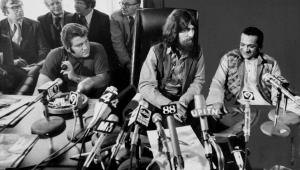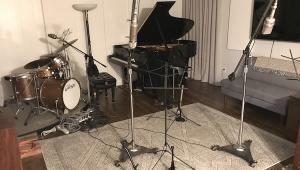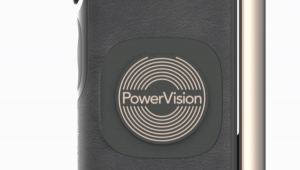AV Options ULTRA-HBL 6 Outlet Power Strip with 6 Foot AVO Deep Cryo Cord
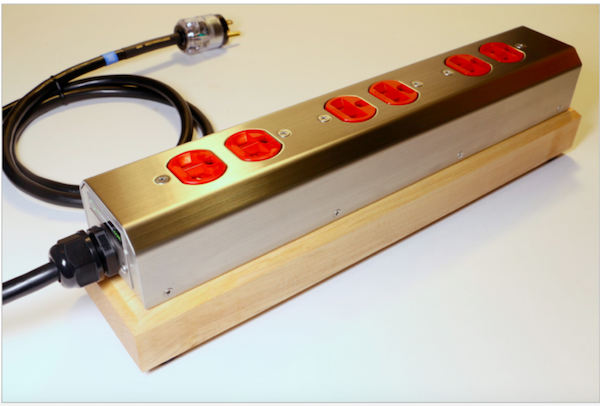
The problem is, good power conditioning can be costly and poor power conditioning, though financially feasible, is usually sonically costly—especially the kind that make use of large current sucking capacitors to produce a “T”, “L” or “Pi” low pass filters. These are good for filtering out line noise but unless carefully implemented they also seriously impede current flow.
So yes, you can add to your system an inexpensive power conditioner to get more A.C. jacks and perhaps lower line-noise but it will often come with a heavy sonic price tag, especially in terms of what’s often abbreviated as “PRaT” (Pacing/Rhythmand/Timing). For more on why that is so you might want to read about the visit to Shunyata Research I made while writing for another online site (but please don’t until you finish this review!).
Barring spending more than your stereo costs on a power conditioner, what else can you do to add A.C. jacks? You could go to your local hardware store and buy a cheap “power strip”. Even the least expensive ones include a “power surge protector”, usually one or more “MOV”s (metal-oxide varistors). These are peak voltage limiters but you can be sure they have a sonic effect. If you don’t think so, buy one of these cheap strips, plug your system into it and hear for yourself.
In my experience, plugging even a budget high performance stereo into a cheap “power strip” is self-defeating. So, what can you do? Consider plugging your system into an AV Options ULTRA-HBL Deep-Cryo 6 outlet Power Strip ($1199). The company makes a less costly one as well (the SuperWiremold, a 9 outlet strip costing $449), that’s more appropriate for some less costly systems, but I didn’t get one to review. You can read the reviews of that one on the AV Options website.
This one is surely among the best looking power strips you’ll find, but the Stainless Steel Type 304 (non-magnetic) chassis and hand-finished solid Maple beauty is beyond skin deep. There are 3 Duplex Hubbell HBL5362R-NEMA 5-20R A.C. jacks (for a total of 6 jacks) that plug into the wall via a 6 feet long AV Options TibiaPlus12-12/3 SJT hard-wired A.C. cord terminated with a Wattgate 5266i wall plug. The Hubbell outlets, TibiaPlus12 AC cable, Wattgate Plug and all internal wire are “Deep-Cryo” treated.
The sonic effect of cryogenically freezing cables, vacuum tubes and musical instruments, is a subject of a great deal of debate online and elsewhere. Processing metal at temperatures at or below -195C is said to produce molecular changes caused by the shrinkage due to cooling. The claim made is that the crystal boundaries align more closely, which improves conductivity and thus, among other things, noticeably reduces the noise floor. The change is said to be permanent. I’ve read that the improvement is greater on less costly and less pure wire. For more about AV Options’ Deep-Cryo process go here.
On the other hand, online you can read about double blind experiments with musical instruments designed to test the claims by some musicians that cryogenically treated brass instruments sound better than non-treated. The double blinds “prove” no sonic differences.
You can believe that or consider that similar tests have “proven” that a Stradivarius violin is sonically indistinguishable from an inexpensive “student” violin and that in blind tests vodkas are similarly indistinguishable from one another.
You can conclude from that, that all vodkas taste identical or if you’re an experienced vodka drinker, come to the correct conclusion that such results prove that double blind testing can produce obviously stupid results (and in any case are always dependent upon the experience and skills of the those participating in the tests—it’s not like a drug trial!) and are therefore not always an appropriate testing methodology.
I have not done even an informal “before/after” listen to cryogenically treated cables—and consider that different cryo methods are said to produce different results.
What I do know is that A.C. cables make an enormous sonic difference and if your experience tells you otherwise, then fine! But, if you dismiss this claim out of hand and have never had a listen and use the cable that’s packed with the gear, you are only cheating yourself! For more on this controversy you might find interesting this Stereophile CES 2018 C.E.S. show report and the near hysteria it produced in the comments section.
Can a totally passive power strip make an obvious sonic difference? I reviewed one costing $20,000 (the SMc Nexus) and even the most cynical doubter would easily hear the difference with it in and out of the system. Is it worth $20,000 in terms of both sonics and what goes into its manufacture? That’s not for me to say. One thing I learned about covering that product was the controversy surrounding IEC jacks. Yes! There’s even a controversy about that.
The one used in the SMc Nexus is an enormous Bocchino Audio Mariner10 which features “99.996% ultra-pure copper ‘tongs’ with silver electroplate and gold or platinum “veneer” (to grasp the size of the thing, look at the picture and consider the size of the familiar IEC jack in relation to what surrounds it). People review these things and ascribe to them specific sonic attributes! I just wanted you to know that. I have no idea how much these cost. The Bocchino website is a steam-powered remnant of an earlier digital civilization.
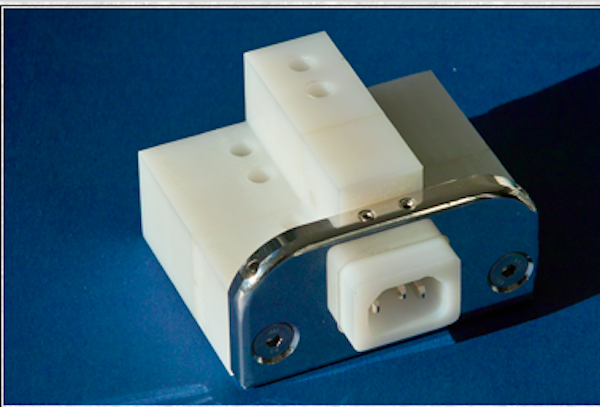
It’s also well-accepted within the “power community” that IEC jacks are a “weak link” and do affect sonics and that in some cases it’s best to dispense with them altogether. That’s the choice made by AV Options here. It’s why the ULTRA-HBL 6 Outlet Power Strip is “hard-wired”.
In addition to the power strip AV Options sent along a few of its 6 foot long TibiaPlus12 Deep-Cryo A.C. cords to use with the ULTRA-HBL. These cost $169 apiece (there are savings if you buy them “bundled” with the strip), which in high performance audio terms is inexpensive (cheap actually). The “12” refers to the wire gauge. The “Plus” refers to the Wattgate plug. Also in the line is a 14 gauge wire version costing $40 less and versions with molded plugs costing even less. None of the cables feature Wattgate IEC connectors. Instead, they are all terminated with molded IEC plugs. The website displays various money saving cord “bundles”.
Using the ULTRA-HBL 6 Outlet Power Strip
What could be simpler than plugging in and using a power strip? A/V Options claims that plug order is critical: power amp into jack #1 closest to where power enters the strip, and from there work backwards to source components, with a turntable plugged into jack #6.
I first used the ULTRA-HBL and a pair of TibiaPlus12 cords on the power amplifier side of my system in place of an AudioQuest Niagara 7000 power conditioner ($8000) and a pair of AudioQuest NRG Dragon High Current power cords ($5200 each). After trying these last year I bought the pair along with a full set of the $4200 Dragon Source power cables. Even at a reviewer accommodation price, this was an expensive proposition but once I heard what they did, I had little choice given what I’d already invested in the rest of my system.
After listening to a few records, I unplugged the Dragons from the Niagara 7000, plugged the ULTRA-HBL into the wall and the darTzeel NHB 458 monoblocks into the ULTRA-HBL and I listened again. Huge step down but hardly surprising! Not a fair comparison. Then I got out a pair of generic whatever they are A.C. cables that had come packed with I can’t remember what and using them I plugged the amps directly into the wall.
That move produced a giant step further down in terms of background blackness, transient clarity and the aforementioned “PRaT”. Music became sluggish, images “fat”, and the blackness behind the notes took on a sort of milky grayness. None of this was difficult to hear and it was definitely not “confirmation bias”, but if you live in the world of our senses being totally unreliable (making it miraculous that we survived as a species guided by those very same senses), be my guest!
When I swapped out the stock cords for the TibiaPlus12s and plugged into the ULTRA-HBL, the sonic improvements going back in the other direction were easy to hear: backgrounds became blacker, images tightened up, transients clarified and with all of that came the improved “PRaT”.
Just before writing this review I decided to revisit this experience using the recently released Mobile Fidelity “One Step” double 45rpm version of Marvin Gaye’s What’s Going On (UD1S 2-008), which is ridiculously superior to both the original Tamla pressing (TS310) and Mobile Fidelity’s previous reissue from 2008 (MFSL 1-314). I played side one of the double 45rpm set and noted the release’s intense three-dimensionality, the powerful yet well-controlled bass line, the velvety black backgrounds (produced in part by the new “SuperVinyl”vinyl formulation developed by NEOTECH and RTI that both lowers the noise floor and enhances groove definition) and the enhanced detail resolution compared to both the original and first reissue. It’s difficult to believe the same tape was used for all three of these but no doubt it was (the original Tamla, as well as almost all Motown albums from the company’s inception were mastered and processed by RCA).
Switching to generic A.C. cords plugged into the wall produced a huge sonic letdown as previously noted. Moving back to the AV Options combo produced blacker backdrops, more precise imaging and tauter bass lines, which of course greatly improved “PRaT”. It’s just that simple.
In my listening situation I have a third equipment rack (the excellent Stillpoints ESS) located in a room adjacent to my main listening space. Plugging gear into the A.C. jacks in that room put them at a sonic disadvantage though the line is the same dedicated one that feeds the rest of the system. Now I use the ULTRA-HBL plugged into the Niagara as an “extension power strip” for the equipment in the adjacent room. The 6 foot long power cord is precisely the required length to reach the Niagara without it hanging in the air and becoming a tripping hazard (and yes, I paid for it at a minor discount).
AV Options offers a 30 day money back guarantee “for almost all purchases on the Online Store along with of course a 5 year product warranty, all of which you’ll see if you visit the AV Options store.
About AV Options
AV Options is an 8 year old “Naim-centric” organization founded by former Naim Service Manager Chris West (38 years experience), David L’Heureux and Nick Despotopoulos (full disclosure: Nick was my partner/publisher of The Tracking Angle magazine back in the 1990s). While the company was originally founded to address the needs of Naim customers, it’s since expanded into the A.C. power products area, producing a series of high value products that includes the ULTRA-HBL and the full line of moderately priced A.C. cords.
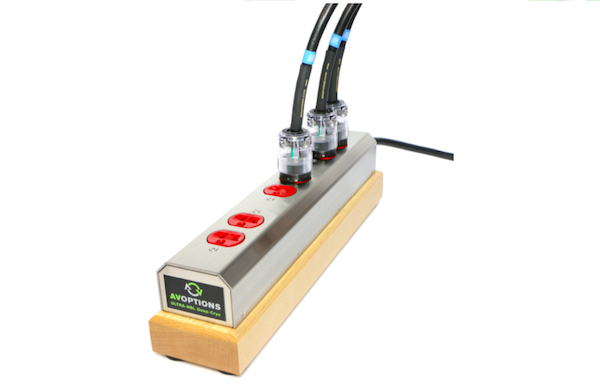
.






